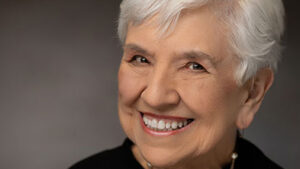Let’s go back again to the “Liturgical Calendar.” On it today, December 6, is a designation not very familiar to most of us. Today is “St. Nicholas Day.” Yes, “that one,” who has given rise to our old friend Santa Claus. Again, many articles and website entries have given us information about this, and I’ll paraphrase here what many of them have in common.
St. Nicholas was a bishop who lived in the fourth century in a place called Myra in Asia Minor, now called Turkey. Nicholas was a very rich man because his parents died when he was young and left him a large sum of money. He was also an extremely kind man and was known for helping the poor and giving secret gifts to people in need.
The most famous legend about St. Nicholas tells how the custom of hanging up stockings to get presents first started.
Legend has it that there was a poor man who had three daughters. He was so poor, he did not have enough money for a dowry, so his daughters couldn’t get married. One night, Nicholas secretly dropped a bag of gold down the chimney and into the house. This meant that the oldest daughter was then able to be married. The bag fell into a stocking that had been hung by the fire to dry. This was repeated later with the second daughter. When the man finally caught Nicholas, Nicholas begged the man not to tell anyone what he had done, because he did not want to bring attention to himself. But soon the news got out and when anyone received a secret gift, it was thought that it was from Nicholas.
Nicholas was eventually made a Saint due to his excessive kindness. St. Nicholas is both the patron saint of children and also of sailors.
During the persecution of Christians by the Roman Emperor Diocletian in the fourth century, St. Nicholas was exiled from Myra and later put in prison. No one really knows when he died, but historians believe it was on December 6 in either 345 or 352. In 1087, his bones were stolen from Turkey by some Italian merchant sailors. The bones are now kept in the Church named after him in the Italian port of Bari.
History has it that someone had to deliver presents to children at Christmas in England, so Nicholas became “Father Christmas” or “Old Man Christmas.” In France, he was then known as “Père Nöel”.
And, by the way, the word Christmas is a short form of “Christ’s Mass,” the worship service to celebrate the birth of Christ as Savior of the world.
And now let’s follow the path from St. Nicholas to Santa Claus. Historians report that in some countries including parts of Austria and Germany, the present giver became the “Christkind” (Christ child) a golden-haired baby, with wings, who symbolizes the new born baby Jesus.
In the early years of Christians in America, the present giver was named “Kris Kringle” (from the Christkind). Later, Dutch settlers in America brought the old stories of St. Nicholas with them and Kris Kringle and St. Nicholas were merged into “Sinterklaas” or as we now say “Santa Claus.”
In Holland and some other European Countries, children still leave clogs or shoes out on the night of the 5th of December (St. Nicholas Eve) to be filled with presents. They also believe that if they leave some hay and carrots in their shoes for Sinterklaas’s horse, they will be left some sweets.
St. Nicholas was quite popular in the Victorian era when writers, poets, and artists rediscovered the old stories. Many of our current Christmas traditions, carols, and celebrations come to us from this time.
So it was that in 1823 the famous poem “A Visit from St. Nicholas” or “T’was the Night Before Christmas” was published in a Troy, New York, newspaper. Dr. Clement Clarke Moore later claimed that he had written it for his children. Apparently, some scholars now believe that it was actually written by Henry Livingston, Jr., who was a distant relative of Dr. Moore’s wife. The poem gives us the now popularly accepted detailed description of St. Nicholas, Santa Claus, with eight reindeer and gives them their names. They became widely known in the song “Rudolph the Red Nosed Reindeer,” written in 1949.
Why does any of this matter? It matters because we need to know and understand that our custom of gift-giving at Christmas comes to us first of all because we acknowledge that the greatest gift at Christmas is the gift from God of Jesus Christ as our Savior. Please tell that truth as often as you can to your children, grandchildren, and everyone. And, tell the story of St. Nicholas, the Bishop of Myra, who gave generously and selflessly from the goodness of his Christian heart.
Merry Christmas, everyone! Christ the Savior is born!
Kollmeyer is Sr. Pastor of Prince of Peace Lutheran Church, located on Hwy. 314 in Fayetteville, between Lowe’s and The Pavilion. He invites all to Christmas Eve Candlelight Services – 4:00 p.m. “Living Nativity” Service, 8:00 and 11:00 p.m. Traditional Candlelight Services.











Leave a Comment
You must be logged in to post a comment.